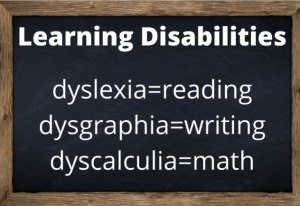Dyslexia is a learning disability that impairs reading ability. Dysgraphia impacts handwriting and fine motor skills.

Click here to Read more interesting case study based article on each TLS sub topic in my second website
Dyslexia
Dyslexia is one of the most common learning difficulties – also known as learning disabilities. There are different types of dyslexia but the most common type is phonological dyslexia which affects the way people break words down into their component parts.
This has consequences for decoding in reading and can also cause spelling and writing difficulties. Because reading and writing are central to most school curricula, children with undiagnosed dyslexia can quickly fall behind their peers as they experience problems with note-taking king reading, homework, writing assignments, and assessments.
Dyslexia is not associated with lower intelligence, but language difficulties can cause children to believe they are less intelligent than their peers and result in low confidence and a poor self-image.
Some common signs of dyslexia include problems reading out loud, inconsistent spelling – they may be able to spell a word one day and not the next – losing one’s place on a page, a poor grasp of phonics, letter reversals, halted writing due to trouble with spelling, and a vocabulary that’s more limited in scope. Learn about the signs of dyslexia, strategies for students with dyslexia, Am I dyslexic? and How to help adults with dyslexia in these posts.
Dysgraphia
Children who struggle with dysgraphia have a hard time with writing and may produce text that is illegible. Writing can be labored, taking a long time to complete, and causing frustration and stress. The spatial orientation and planning aspects of writing can be particularly challenging for people with dysgraphia. This includes planning the white spaces between letters and words, writing in a straight line and/or producing lines of text that are vertically spaced.
Staying in the margins, using punctuation, and choosing between capital and lowercase letters may also be hard. Letter formation itself might be problematic and typing on the computer is often a recommended accommodation at school.
Children with dysgraphia are often eager to avoid handwriting, particularly in front of their peers. They may feel embarrassed when writing on the board, produce less text than is necessary for written assignments, and can generally perform poorly on assessments that require written answers.